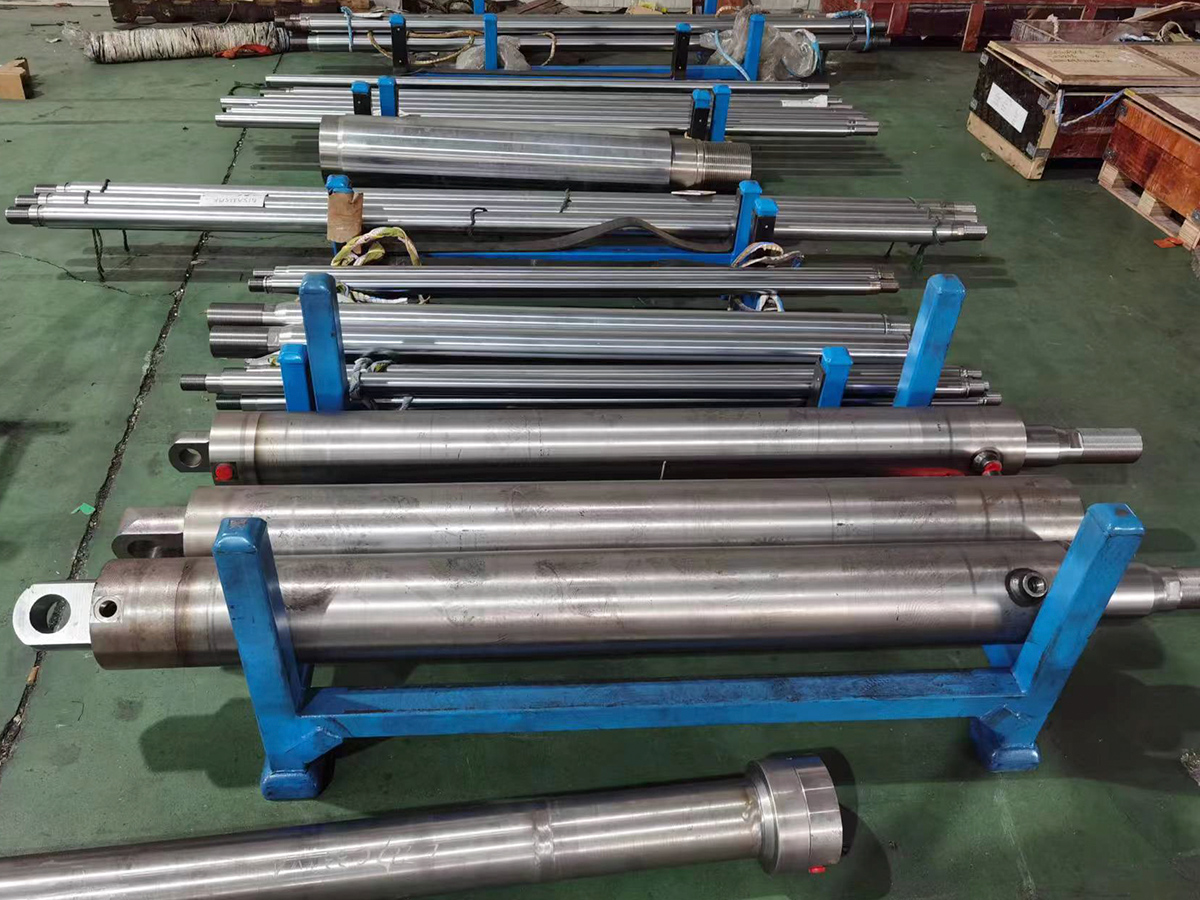Detailed guide to the care and maintenance of tie rod hydraulic cylinders
4 min readTie rod hydraulic cylinder is a common hydraulic component widely used in various mechanical equipment. Its function is to convert hydraulic energy into mechanical energy to achieve linear motion. In order to ensure the normal operation of the tie rod hydraulic cylinder and extend its service life, correct maintenance and upkeep is very important. This article will introduce in detail the maintenance and upkeep of tie rod hydraulic cylinders.
First of all, regular inspection of the quality and oil level of the hydraulic oil is an important part of the maintenance of the tie rod hydraulic cylinder. Hydraulic oil is the key to the normal operation of the tie rod hydraulic cylinder, so the oil quality must be maintained in good condition. Regularly check the quality of the hydraulic oil, including color, odor, viscosity and other indicators. If the oil is found to be deteriorated or contaminated, it should be replaced in time. In addition, the oil level of the hydraulic oil should be checked regularly to ensure that it is within the specified range to avoid affecting the normal operation of the hydraulic cylinder due to the oil level being too low or too high.
Secondly, keeping the hydraulic system clean is also an important aspect of maintenance of tie rod hydraulic cylinders. During use, some impurities and dirt will be produced in the hydraulic system. If not cleaned in time, it will affect the working effect of the hydraulic cylinder. Therefore, regular cleaning of the hydraulic system is very necessary. When cleaning the hydraulic system, special cleaning agents should be used and cleaning should be carried out in accordance with operating procedures to ensure thorough cleaning. In addition, the hydraulic filter element should be replaced regularly to prevent impurities from entering the hydraulic system.

In addition, regular inspection of the sealing of hydraulic pipelines and joints is also an important part of the maintenance of tie rod hydraulic cylinders. The sealing of hydraulic pipelines and joints is crucial to the normal operation of the hydraulic system. Regularly check the sealing of hydraulic pipelines and joints. If leakage is found, the seals should be replaced in time. In addition, the connections of hydraulic pipelines and joints should be checked regularly to see if they are loose. If looseness is found, they should be tightened in time.
In addition, regular inspection of the working status of the hydraulic cylinder is also an important part of the maintenance of the tie rod hydraulic cylinder. Regularly check the working status of the hydraulic cylinder, including stroke, speed, force and other indicators. If any abnormality is found, make timely adjustments and repairs. In addition, attention should be paid to the operating temperature of the hydraulic cylinder. If the temperature is too high, cooling measures should be taken in time to prevent the hydraulic cylinder from being damaged due to overheating.
Finally, regular lubrication and maintenance of the hydraulic cylinder is also an important part of the maintenance of the tie rod hydraulic cylinder. Lubrication and maintenance of hydraulic cylinders can reduce friction and wear and extend the service life of hydraulic cylinders. Add lubricating oil to the hydraulic cylinder regularly, and perform lubrication and maintenance according to operating procedures to ensure the normal operation of the hydraulic cylinder.
Some materials in tie rod hydraulic cylinders may corrode or rust due to prolonged exposure to moisture or chemicals. To prevent this from happening, it should be cleaned regularly and applied with anti-corrosion grease or paint. At the same time, direct contact with the ground should be avoided during storage to reduce the impact of humid environments.
Through the maintenance and upkeep strategies described above, users of tie rod hydraulic cylinders can ensure that their equipment maintains optimal performance under a variety of operating conditions. Regular maintenance can not only extend the service life of equipment, but also reduce the risk of sudden failures, thereby ensuring the continuous and stable operation of the entire production line and improving the efficiency of mechanical equipment. Remember, prevention is always more cost-effective than repair.
As a professional tie rod hydraulic cylinder supplier, we are committed to designing, developing and producing high-quality hydraulic cylinder products to meet the needs of various industrial applications. We have advanced manufacturing equipment and technical teams to provide customized solutions to meet our customers' specific requirements.
How to choose a quality tie rod cylinder manufacturer: key strategies and considerations
Protect your investment: effective anti-corrosion measures for tie rod cylinders
Hydraulic tie rod cylinder sealing technology: the key to optimized performance and extended life
Detailed explanation of precautions and operating procedures for safe use of tie rod cylinders
Factors and analysis affecting the price of tie rod cylinders
Material selection for tie rod cylinders: a balance between performance and application
tie rod cylinder and welded cylinder, which one to choose?
Key factors in selecting tie rod cylinder size specifications
Analysis of the working environment of tie rod cylinder
The history and future development trends of tie rod cylinder
Sealing structure and application of tie rod cylinder
Matching and application of tie rod cylinder in hydraulic system
Application of tie rod cylinder in automobile manufacturing field
Tie rod cylinder manufacturing and quality control
The market and application prospects of tie rod cylinders
Why are tie rod hydraulic cylinders so popular?
What are the applications of tie rod hydraulic cylinders?
How to choose the right tie rod hydraulic cylinder
mia
peterchen@jinhai.cn
